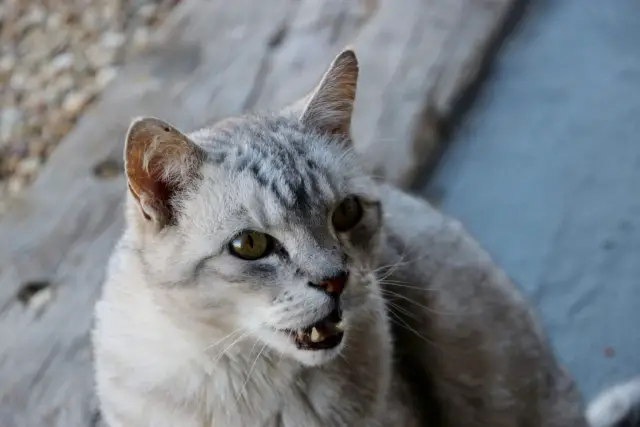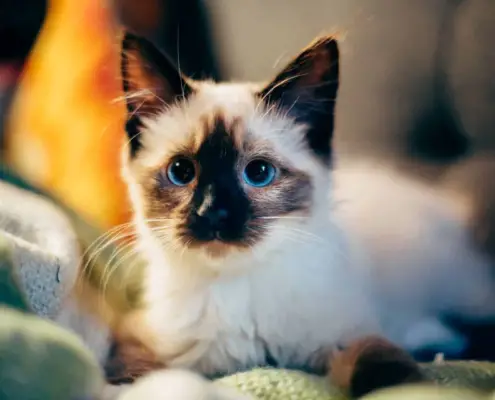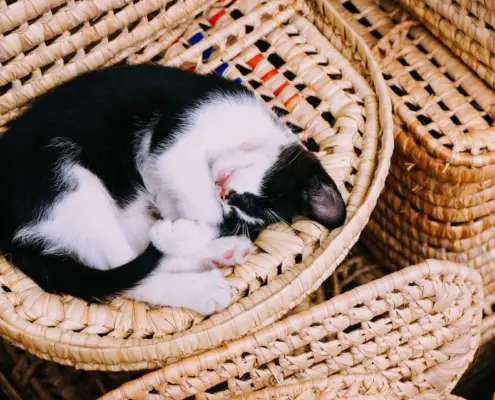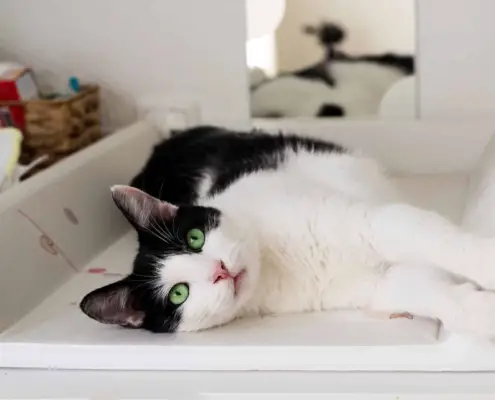
Cats are known for their mysterious and sometimes unpredictable behavior. One such behavior that has intrigued cat owners and researchers alike is their tendency to hiss at snakes. Hissing is an instinctual behavior in cats that serves as a warning signal. When a cat encounters a snake, whether it is a real threat or not, the primal response kicks in, leading to hissing.
Why do cats hiss at snakes?
The instinctual behavior of hissing in cats is deeply rooted in their evolutionary history. Cats are natural predators, and their survival instincts have been finely tuned over thousands of years. Snakes, with their slithering movements and venomous nature, pose a potential threat to cats. Hissing serves as a way for cats to communicate their territorial boundaries and warn potential threats to stay away.
The primal response: understanding the evolutionary roots
To fully understand why cats hiss at snakes, it is important to delve into the evolutionary roots of this behavior. Cats, as descendants of wild feline species, have developed a range of defensive mechanisms to protect themselves from predators. Hissing is one such mechanism that has been passed down through generations as a survival strategy.
The role of fear and self-defense in cat behavior
Fear and self-defense play a crucial role in cat behavior, including their response to snakes. When a cat encounters a snake, its primal instincts are triggered, leading to an immediate fear response. Hissing serves as a way for cats to assert their dominance and protect themselves from potential harm. It is a warning signal that communicates to the snake that the cat is prepared to defend itself if necessary.
The visual cues that trigger a hissing response in cats
Cats rely heavily on visual cues to assess potential threats in their environment. When it comes to snakes, certain visual characteristics trigger the hissing response. The slithering movement of a snake, combined with its elongated body and flickering tongue, can be perceived as threatening by a cat. These visual cues activate the cat’s primal response, leading to hissing as a defensive measure.
The importance of scent in cat-snake interactions
In addition to visual cues, scent also plays a significant role in cat-snake interactions. Cats have a highly developed sense of smell, and they use it to gather information about their surroundings. Snakes have a distinct scent that cats can detect, even from a distance. This allows cats to identify the presence of a snake and respond accordingly, often with hissing as a warning signal.
The benefits of hissing as a warning signal
Hissing serves several important functions as a warning signal in cat behavior. Firstly, it communicates to the snake that the cat is aware of its presence and is prepared to defend itself if necessary. This can deter the snake from attacking, as it recognizes the cat’s readiness to fight back. Additionally, hissing also serves as a warning to other cats in the vicinity, alerting them to the potential danger and allowing them to take appropriate action.
Can cats distinguish between dangerous and harmless snakes?
While cats have a keen sense of danger and can detect the presence of a snake, they may not always be able to distinguish between dangerous and harmless snakes. Cats rely on their instincts and previous experiences to assess threats, but they are not infallible. It is important for cat owners to be vigilant and take precautions to protect their cats from potential harm, regardless of the snake’s perceived danger level.
How to handle a cat’s hissing behavior towards snakes
If you find yourself in a situation where your cat is hissing at a snake, it is important to handle the situation with caution. Do not attempt to intervene directly, as this could put both you and your cat at risk. Instead, create a safe distance between your cat and the snake, and contact a professional wildlife removal service if necessary. It is also advisable to consult with a veterinarian to ensure that your cat has not been injured or exposed to any toxins.
The fascinating world of cat behavior and snake interactions
The hissing behavior of cats towards snakes is a fascinating aspect of their natural instincts and behavior. It is a testament to their evolutionary history and their ability to adapt and survive in their environments. Understanding why cats hiss at snakes can help cat owners better protect their feline companions and appreciate the complex world of animal behavior. So the next time you witness your cat hissing at a snake, remember that it is simply their primal response at work, keeping them safe and secure.
If you enjoyed my article, I would appreciate you sharing it with your network.

Sima Ndlebe
Sima writes for CatBuzz. He is interested in Cats, Health and Fitness, and Entrepreneurship.
Published: 30 October 2023



